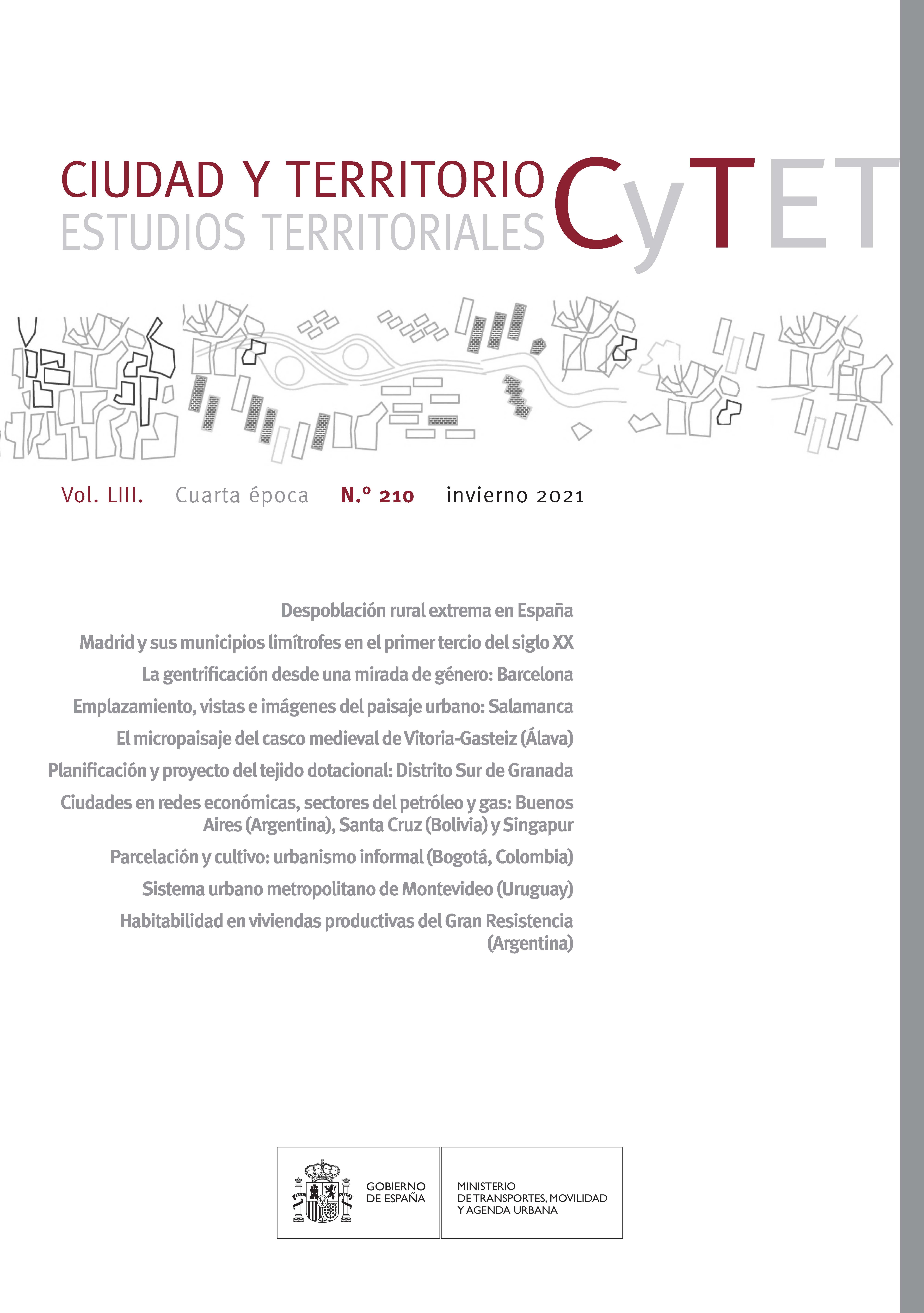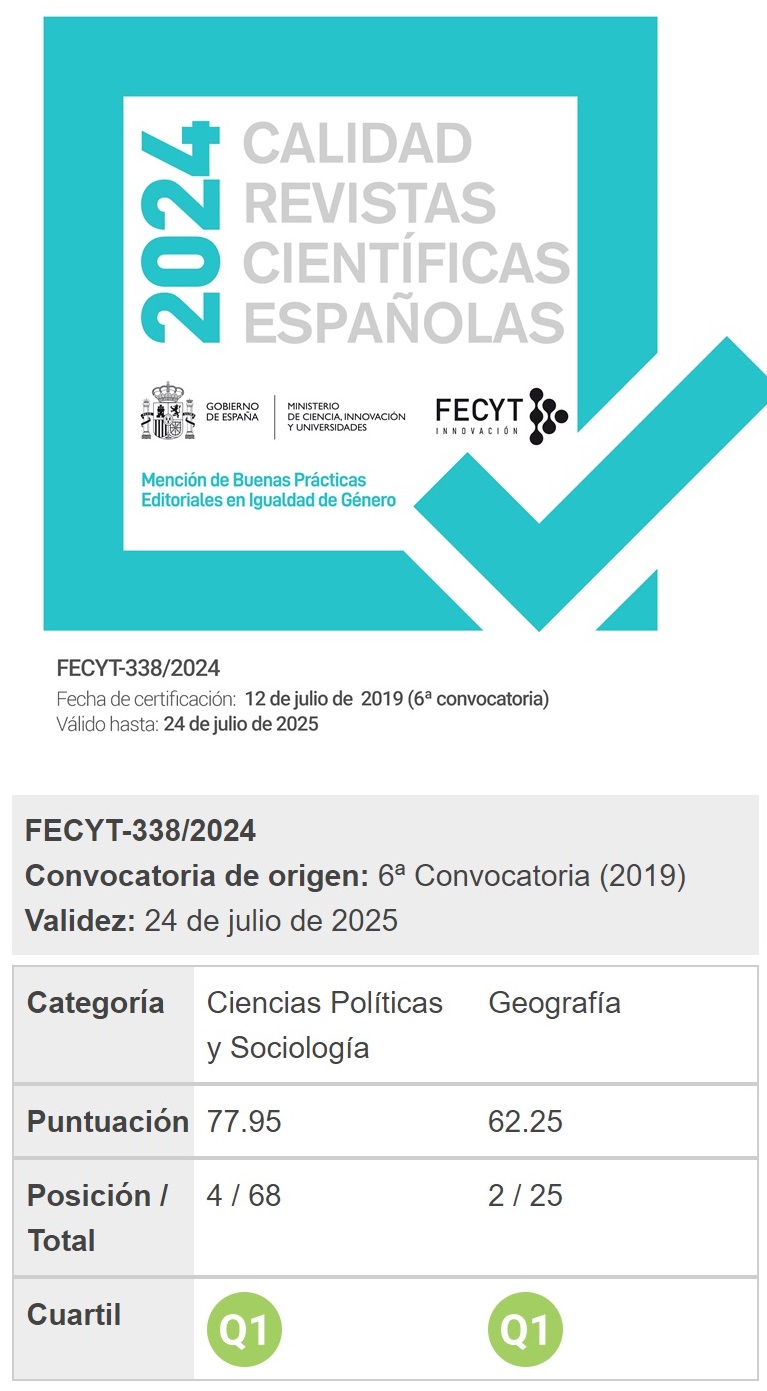Ciudades en redes económicas: una comparación de Buenos Aires y Santa Cruz con Singapur, enfocada en el sector de petróleo y gas
DOI:
https://doi.org/10.37230/CyTET.2021.210.07Palabras clave:
Ciudad compuerta, Desarrollo, Red global de producción, Buenos Aires, Santa CruzResumen
En estudios recientes sobre Singapur, se propone que las “ciudades compuertas” conectan lugares periféricos a las redes globales de producción y tienen un impacto importante sobre el desarrollo de la periferia. Enfocando el sector de petróleo y gas, el presente artículo revela las múltiples formas en que las ciudades sirven como centros de globalización. El autor se refiere a treinta y tres entrevistas e información de fuentes secundarias para mostrar que Buenos Aires (Argentina) es, en primer lugar, un nodo de control corporativo. La prestación de servicios técnicos acontece en el interior del país. Santa Cruz (Bolivia), en cambio, concentra estos servicios y otras funciones debido a la falta de condiciones adecuadas en ubicaciones periféricas que aprovechan poco de la integración en las redes globales de producción.
Descargas
Publicado
Cómo citar
Número
Sección
Licencia
Derechos de autor 2021 Sören Scholvin

Esta obra está bajo una licencia internacional Creative Commons Atribución-NoComercial-SinDerivadas 4.0.
Sin perjuicio de lo dispuesto en la legislación vigente sobre Propiedad Intelectual, y conforme a la misma, el/la los/las autor/a/es/as que publiquen en CyTET cede/n a título gratuito, de modo no exclusivo y sin límite temporal al Ministerio de Transportes, Movilidad y Agenda Urbana los derechos para difundir, reproducir, comunicar y distribuir en cualquier formato actual o futuro, en papel o electrónico, la versión original o derivada de su obra bajo licencia de Creative Commons Reconocimiento-NoComercial-SinObraDerivada 4.0 Internacional (CC BY-NC-ND 4.0), así como para incluir o ceder a terceros la inclusión de su contenido en índices, repositorios y bases de datos nacionales e internacionales, con referencia y reconocimiento en todo caso de la autoría del mismo.
Además, al realizar el envío, el/la los/las autor/a/es/as declara/n que se trata de un trabajo original en el que se reconocen las fuentes que han sido utilizadas en su estudio, comprometiéndose a respetar la evidencia científica y a no modificar los datos originales para verificar o refutar una hipótesis de partida; que el contenido esencial del mismo no ha sido publicado previamente ni se publicará en ninguna otra obra o revista mientras esté en proceso de evaluación en la revista CyTET; y que no se ha remitido simultáneamente a otra publicación.
Los autores deben firmar un Formulario de Cesión de Derechos, que les será enviado desde la Secretaría de CyTET una vez se acepte su artículo para ser publicado.
Con el objetivo de favorecer la difusión del conocimiento, CyTET se adhiere al movimiento de revistas de Open Access (OA) y entrega la totalidad de sus contenidos a diversos índices, repositorios y bases de datos nacionales e internacionales bajo este protocolo; por tanto, la remisión de un trabajo para ser publicado en la revista presupone la aceptación explícita por parte del autor/a de este método de distribución.
Se anima a las/os autoras/es a reproducir y alojar sus trabajos publicados en CyTET en repositorios institucionales, páginas web, etc. con la intención de contribuir a la mejora de la transferencia del conocimiento y de la citación de dichos trabajos.








 Enlace a CyTET en Linkedin
Enlace a CyTET en Linkedin